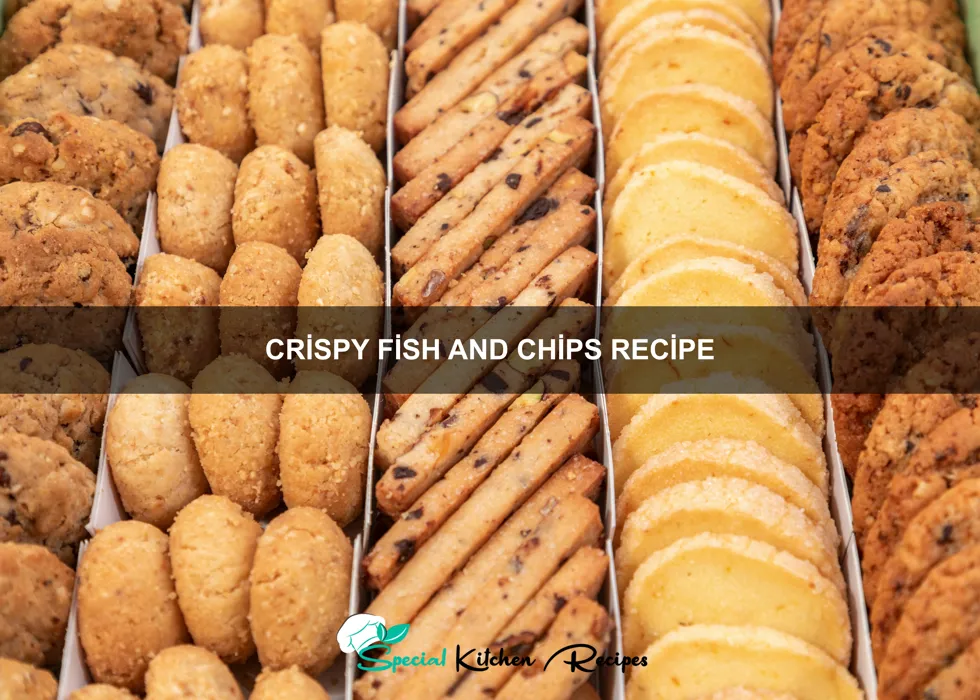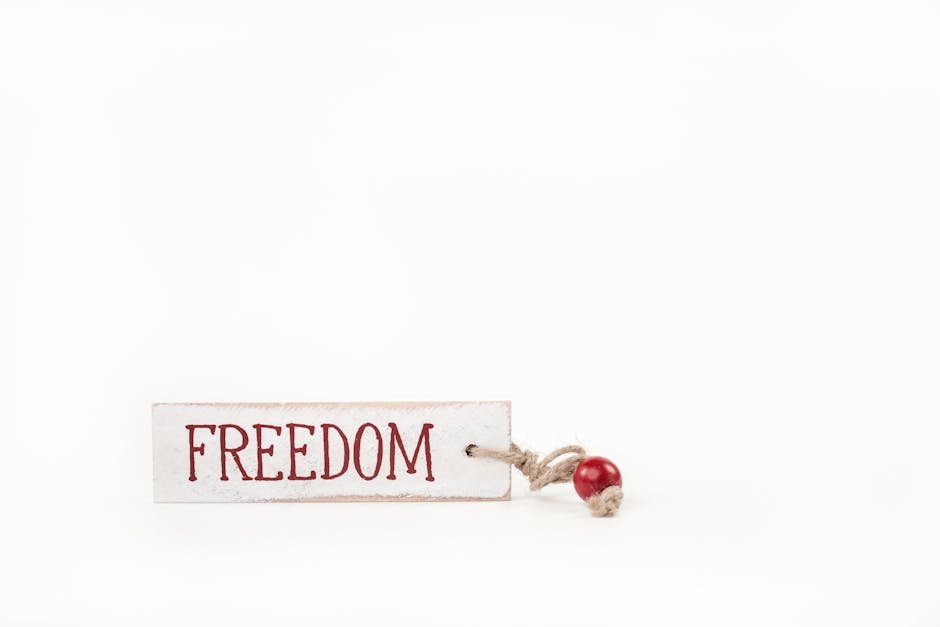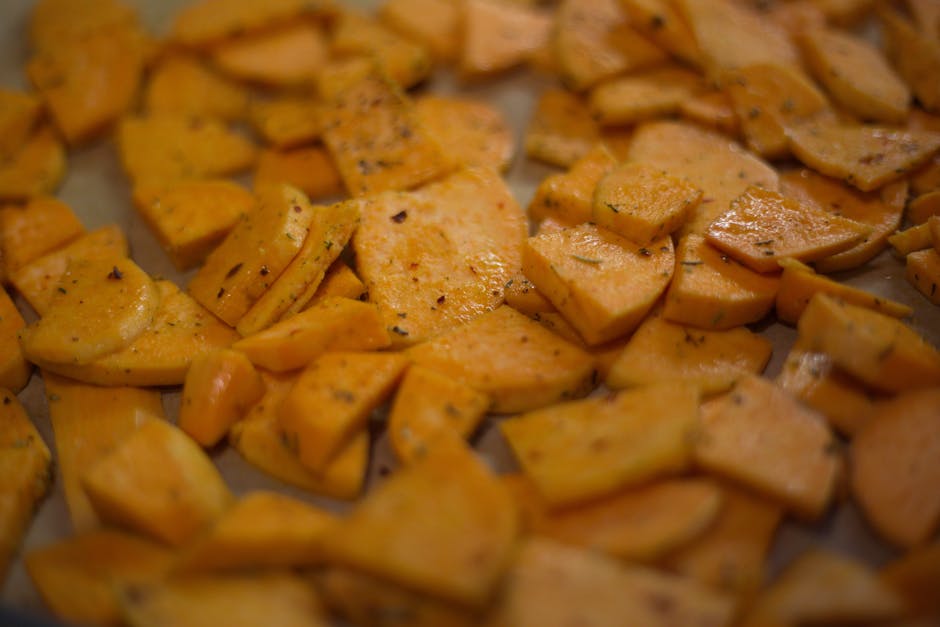Prepare to embark on a culinary journey through time with this recipe for Crispy Fish and Chips! This beloved dish, a cornerstone of British cuisine, boasts a surprisingly rich and complex history, far beyond its seemingly simple preparation. While the exact origins remain debated, the popular consensus points to the late 19th and early 20th centuries in England’s working-class communities as the birthplace of this iconic pairing. Initially, fish was a readily available and affordable protein source for these communities, often served fried in simple batter. The addition of chips (French fries), also a popular street food, cemented the combination we know and love today.
The rise of fish and chips is intrinsically linked to the expansion of the railways in Britain. This efficient transportation network allowed for the rapid distribution of fresh fish from coastal towns inland, making it accessible to a wider population. Furthermore, the development of improved frying techniques and readily available potatoes contributed to the dish’s widespread appeal. By the mid-20th century, fish and chips had become a national institution, with an estimated 25,000 fish and chip shops operating across the UK at its peak. This impressive number highlights the dish’s enduring popularity and its integral role in British culinary culture.
Beyond its culinary importance, fish and chips hold significant cultural weight. It’s more than just a meal; it’s a symbol of British identity, often associated with seaside holidays, family gatherings, and a sense of nostalgic comfort. The traditional newspaper wrapping, a hallmark of the takeaway experience, adds another layer to the dish’s cultural significance. Even today, despite the rise of global cuisines and diverse culinary options, fish and chips remain a beloved staple, proving its enduring appeal transcends generations. The simple pleasure of crispy, golden-brown batter enveloping flaky fish, served alongside perfectly crisp chips, continues to hold a special place in the hearts (and stomachs) of people worldwide.
Ingredients and Measurements
This recipe yields approximately 4 servings of crispy fish and chips. Accurate measurements are crucial for achieving the perfect texture and flavor balance. We recommend using a kitchen scale for the most precise results, especially when measuring flour and batter ingredients.
For the Fish:
- 1 lb (450g) firm white fish fillets, such as cod, haddock, or pollock. Choose fillets that are of consistent thickness for even cooking. Thicker fillets may require a slightly longer frying time.
- 1/2 cup (60g) all-purpose flour. Using a good quality flour contributes to a crispier batter.
- 1 tsp salt. Don’t skimp on the salt! It enhances the flavor of both the fish and the batter.
- 1/2 tsp black pepper, freshly ground.
- 1/2 cup (120ml) ice-cold beer or sparkling water. Using ice-cold liquid is essential for a light and crispy batter. The cold temperature prevents gluten development in the flour, resulting in a more delicate texture.
- Vegetable oil, for deep frying. Approximately 3 cups (700ml) are needed for sufficient oil depth. Use a high-smoke-point oil like canola, vegetable, or peanut oil.
For the Chips (Potatoes):
- 2 lbs (900g) russet potatoes, peeled and cut into 1/2-inch thick chips. Use a mandoline slicer or sharp knife for uniform chip thickness to ensure even cooking. Unevenly sized chips will result in some being undercooked and others burnt.
- 2 tbsp vegetable oil. A light coating of oil helps to crisp the potatoes.
- Salt and pepper, to taste.
Optional additions: Consider adding a teaspoon of baking powder to the batter for extra crispiness. You can also experiment with different seasonings for the fish, such as paprika, garlic powder, or onion powder. For the chips, a sprinkle of herbs like rosemary or thyme before frying adds a delightful aroma and flavor.
Important Note: Always ensure the oil is heated to the correct temperature (around 350°F/175°C) before frying. Use a thermometer to monitor the oil temperature for consistent results. Overcrowding the fryer will lower the oil temperature and result in soggy fish and chips. Fry in batches to avoid this.
Equipment List
Creating perfectly crispy fish and chips requires the right tools. This list details the essential equipment, along with recommendations for optimal results. Don’t skimp on quality; the right equipment can significantly impact the final product.
For Fish Preparation: You’ll need a large, sharp knife (at least 8 inches) for filleting the fish. A smaller paring knife is also helpful for trimming any excess skin or fat. A good quality fish scaler is essential if you’re working with whole fish. Avoid using serrated knives for filleting, as they can tear the delicate fish flesh. Consider investing in a fish filleting knife specifically designed for clean cuts. Measuring scales are crucial for accurately weighing your fish portions for even cooking.
For Battering and Coating: Two medium-sized bowls are necessary – one for the batter and one for the breading (if using). A whisk is essential for creating a smooth, lump-free batter. Choose a whisk with sturdy wires to prevent bending during vigorous mixing. Measuring cups and spoons are crucial for accurate ingredient measurements, ensuring consistent batter texture and flavour. A large flat plate or shallow tray is ideal for holding the breading, allowing for even coating of the fish.
For Frying: A large, heavy-bottomed pot or deep fryer is vital for achieving even cooking and preventing scorching. A minimum capacity of 6 quarts is recommended to accommodate a decent batch of fish and chips. A deep fryer with a thermostat is ideal for maintaining a consistent oil temperature, crucial for perfectly crispy results. A deep-fry thermometer is non-negotiable; it ensures the oil reaches and maintains the correct temperature (around 350°F/175°C). Never fry without a thermometer. A slotted spoon or spider is essential for safely removing the cooked fish and chips from the hot oil. Several wire racks are useful for draining excess oil from the cooked fish and chips.
For Serving: Finally, you’ll need serving dishes, preferably ones that can retain heat, such as ceramic plates or bowls. Paper towels are excellent for absorbing extra oil. Consider using newspaper-style wrapping paper for a traditional fish and chips presentation, but remember to use food-safe paper. Avoid using recycled or uncoated paper for direct food contact.
Having all this equipment readily available will make the fish and chip preparation process smoother and more efficient, resulting in a truly delicious and professional-looking meal.
Fish Preparation (including portioning and battering)
Preparing the fish correctly is crucial for achieving perfectly crispy fish and chips. We’ll be using cod fillets for this recipe, but you can substitute with haddock, pollock, or other firm white fish. Start by thoroughly rinsing your chosen fish fillets under cold running water. Pat them completely dry with paper towels; excess moisture will prevent a crisp batter.
Next, we need to portion the fish. Aim for fillets approximately 100-120g each. This ensures even cooking and prevents some pieces from overcooking while others remain undercooked. Use a sharp knife to cut the fillets into even, rectangular portions. Consistency in size is key for even cooking. If your fillets are particularly thick, you may want to gently butterfly them (cut nearly all the way through horizontally) to ensure they cook through evenly.
Now, let’s prepare the batter. For this recipe, we’ll use a classic beer batter. In a large bowl, whisk together 250g of plain flour, 1 tsp of baking powder, and a generous pinch of salt. Gradually whisk in 300ml of ice-cold lager or beer. Do not overmix; a few lumps are perfectly acceptable. Overmixing develops the gluten, resulting in a tough batter. The batter should be relatively thick, like single cream.
Once the batter is ready, gently dip each fish portion into the batter, ensuring it’s fully coated. Avoid overcrowding the batter. Work in batches if necessary. Allow any excess batter to drip off before placing the fish on a wire rack over a baking tray. This prevents the batter from becoming soggy. Let the battered fish rest for about 10-15 minutes. This allows the batter to adhere to the fish and helps it crisp up nicely during frying.
Professional Tip: For an extra crispy batter, you can add a tablespoon of cornstarch to your batter mix. This will further enhance the crispiness. Also, ensuring your oil is at the correct temperature (around 180°C/350°F) is paramount. Use a thermometer to monitor the temperature consistently. Too low a temperature will result in greasy fish, while too high a temperature will burn the batter before the fish is cooked through.
Remember to prepare your frying oil and have everything ready before you start battering the fish. This will ensure a smooth and efficient cooking process. Following these steps will guarantee deliciously crispy fish every time!
Chip Preparation (including cutting and soaking)
The key to achieving perfectly crispy chips lies in meticulous preparation. We’ll be using 1 kg of Maris Piper potatoes, renowned for their fluffy interior and crisp exterior, ideal for chip making. Avoid using floury potatoes like Russets, as they’ll become mushy when fried.
First, thoroughly wash the potatoes under cold running water to remove any excess soil. Then, peel them using a vegetable peeler or, for a rustic look, leave the skins on after scrubbing them vigorously. Peeling is generally recommended for a more consistent fry, but leaving the skins on adds a bit of extra flavour and texture.
Now for the cutting. Consistency is crucial for even cooking. Aim for chips that are roughly 1cm x 1cm in cross-section and about 10-12cm long. Using a mandoline slicer will ensure uniform cuts, leading to chips that cook evenly and achieve that perfect crispiness. If you don’t have a mandoline, use a sharp knife and take your time for accurate, even cuts. Avoid excessively thin chips, which will burn easily, and excessively thick ones, which will remain undercooked in the center.
Once cut, place the chips in a large bowl and cover them completely with cold water. Soaking the chips for at least 30 minutes, and ideally up to 2 hours, is a critical step. This process removes excess starch, which is the culprit behind soggy chips. The starch leaches out into the water, leaving behind chips that will crisp up beautifully during frying.
After soaking, thoroughly drain the chips in a colander. Pat them completely dry with clean kitchen towels or paper towels. Any remaining moisture will cause the oil to splatter violently and reduce the crispiness of your final product. The drier the chips, the crispier they will become.
Before frying, you can optionally give your chips a quick rinse under cold water to ensure any lingering starch is removed. Then, pat them dry again, ensuring they’re completely dry to maximize crispiness.
Proper chip preparation is the foundation for exceptional fish and chips. By following these steps carefully, you’ll be well on your way to creating a truly memorable dish.
Frying the Fish
Once your fish is battered and ready, it’s time for the frying stage. This is where you’ll achieve that perfect crispy exterior and flaky interior. Ensure your oil is at the correct temperature – this is crucial for achieving the best results. We’ll be using vegetable oil for this recipe, but you can substitute with other high-heat oils like canola or peanut oil.
Pour approximately 3 cups of vegetable oil into a large, heavy-bottomed pot or deep fryer. Never fill the pot more than one-third full to prevent oil splatter and overflow. Use a deep-fry thermometer to monitor the oil temperature. The ideal temperature for frying fish is between 350-375°F (175-190°C). If you don’t have a thermometer, you can test the oil by dropping a small piece of batter into the oil; it should sizzle immediately and rise to the surface within a few seconds. If it doesn’t sizzle vigorously or sinks, adjust the heat accordingly.
Carefully lower the battered fish fillets into the hot oil, ensuring not to overcrowd the pot. Overcrowding will lower the oil temperature, resulting in greasy, soggy fish. Fry in batches of 2-3 fillets at a time, depending on the size of your pot. This allows for even cooking and prevents sticking. Fry for approximately 3-4 minutes per side, or until the batter is golden brown and crispy, and the fish is cooked through. You can check for doneness by gently pressing the thickest part of the fillet – it should be opaque and flake easily with a fork.
Once cooked, remove the fish from the oil using a slotted spoon or tongs and place them on a wire rack set over a baking sheet lined with paper towels. This allows excess oil to drain away, contributing to a crispier finish. Avoid overcrowding the rack, as this will steam the fish and make it soggy. Let the fish rest for a few minutes before serving.
Important Safety Note: Hot oil is extremely dangerous. Always use caution when frying and never leave the oil unattended. Keep a fire extinguisher nearby, and ensure your cooking area is well-ventilated. If you experience any oil splatter, immediately turn off the heat and allow the oil to cool before attempting to clean up.
Pro Tip: For extra crispy fish, you can double-fry the fillets. Fry them once at a lower temperature (around 325°F) for a few minutes to cook the fish through, then raise the temperature to 375°F for a quick second fry to achieve maximum crispiness. Remember to let the oil reheat to the correct temperature between batches.
Frying the Chips
Frying the chips is the crucial final step to achieving perfectly crispy fish and chips. Get this right, and you’ll have a truly memorable meal. We’ll be using a two-stage frying process for optimal results: a pre-fry (blanching) followed by a final fry.
For the pre-fry: Heat approximately 2 liters of vegetable oil in a large, heavy-bottomed pot or deep fryer to 130°C (265°F). Use a thermometer; this is essential for consistent results. Don’t overcrowd the pot; work in batches of about 500g of your prepared chips (cut into your preferred size and shape, approximately 1cm thick). Fry for approximately 4-5 minutes, or until the chips are slightly softened but not browned. They should be pale and pliable. Remove the chips using a slotted spoon and place them on a wire rack to cool completely. This stage removes excess moisture, leading to crispier chips in the final fry.
Important note: Never leave the oil unattended while frying. Always use caution and handle hot oil with care. If the oil starts to smoke, immediately turn off the heat and allow it to cool before attempting to re-use.
For the final fry: Once the chips have cooled completely, increase the oil temperature to 180°C (355°F). Again, use a thermometer for accuracy. Carefully add another batch of pre-fried chips, ensuring not to overcrowd the pot. Fry for 3-4 minutes, or until golden brown and perfectly crisp. Avoid over-crowding the pot, as this will lower the oil temperature and result in soggy chips. Remove the chips with a slotted spoon and drain on kitchen paper to remove any excess oil. Season immediately with salt, and serve immediately with your freshly fried fish.
Professional Tip 1: Using a good quality vegetable oil with a high smoke point is crucial. Avoid oils that are prone to burning at high temperatures.
Professional Tip 2: Don’t be tempted to skip the pre-fry. This step is vital for achieving perfectly crispy chips that aren’t soggy inside.
Professional Tip 3: For extra crispy chips, you can add a small amount of cornstarch to the chips before the pre-fry. The cornstarch will help to absorb excess moisture and further enhance the crispiness.
Professional Tip 4: Once fried, serve the chips immediately. They are best enjoyed while they are still hot and crispy. If you must keep them warm, place them in a low oven (around 80°C/175°F) on a wire rack to prevent them from becoming soggy.
Recommendations
For the crispiest, most delicious fish and chips, follow these recommendations:
Serving Suggestions: Serve your fish and chips immediately after cooking for the best texture and flavor. A classic accompaniment is malt vinegar, but tartar sauce, lemon wedges, and even aioli are also excellent choices. Consider offering a variety of dipping sauces to cater to different preferences. For a truly authentic experience, serve your fish and chips in newspaper-lined baskets (food-safe paper, of course!).
Storage: Leftovers should be stored in an airtight container in the refrigerator. Fish and chips are best enjoyed fresh, but if storing, consume within 24 hours. Reheating can be done in a low oven (around 350°F/175°C) for about 10-15 minutes, or in an air fryer for a crispier result. Note that reheating may slightly alter the texture.
Complementary Dishes: To elevate your fish and chips meal, consider serving it with a side of mushy peas, a simple salad (a coleslaw or a green salad with a light vinaigrette), or even some homemade potato wedges. These additions provide a nice contrast in texture and flavor. For a heartier meal, add a side of onion rings.
Nutritional Information (Approximate per serving, will vary depending on ingredients and portion size): Calories: Approximately 500-700 calories. Fat: High in fat due to the frying process. Protein: Moderate protein content from the fish. Carbohydrates: High in carbohydrates from the potatoes. Note: This is an estimate and the actual nutritional content will depend on the specific ingredients used and the portion size. For a more accurate nutritional breakdown, use a nutrition calculator with the exact ingredients and quantities used in your recipe.
Important Note: Always ensure your cooking oil is at the correct temperature to prevent burning and to achieve the optimal level of crispiness. Overcrowding the pan will lower the oil temperature and result in soggy chips. Use caution when handling hot oil.





